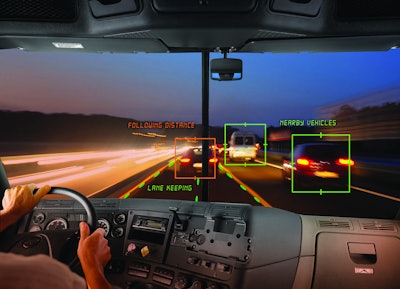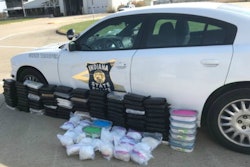
We’re guessing you drive safely any time you’re on the road no matter when or where.
However, according to 100 billion miles of driving data captured by in-cab cameras you may wish to pay extra attention if you happen to be on the road on a Wednesday or driving any day between the hours of 11 p.m. and 5 .m. And, be careful if your travels take you through the areas around Allentown and Harrisburg, Pennsylvania.

- Wednesday is the day of the week when most collisions occur, especially between 2 a.m. and 4 a.m.
- Monday is the day of the week with the least number of collisions
- Overnight — 11 p.m. to 5 a.m. — is the time of day when the most collisions occur
- Friday is the day of the week during which what it calls “near collisions” occur
- Afternoon — 1 pm. to 5 p.m. — is the time of day with the most “near collisions”
Lytx announced these and other findings in a news release and at the American Trucking Associations‘ Management Conference & Exhibition in Austin, Texas earlier this week. The data was collected on 116,000 in-cab recorders between January and September of this year, according to the company.
That same data also showed the top five riskiest road segments for North American truck drivers. Those stretches of road include
- Pennsylvania Route 309: Near Vera Cruz Road, Upper Saucon Township, (South of Allentown)
- Pennsylvania Route 309: Near W. Emmaus Avenue, Allentown (Southeast of Queen City Municipal Airport)
- Pennsylvania Route 181: Near Crooked Hill Road, Susquehanna Township (East of Harrisburg Area Community College)
- Tennessee Interstate 40: Near Green Hill Road, Dandridge (East of Knoxville)
- Tennessee Interstate 24: Near Belvoir Avenue, Chattanooga (Southwest of Chattanooga Metropolitan Airport)
According to Lytx, “These five road segments are 172 times more risky on average than the rest of Lytx’s trucking-industry footprint, based on Lytx’s proprietary risk score system. Four out of the five segments are near interchanges and the other is near an exit/on ramp, which are areas of high driver volatility. Rapid changes in driving speed and sudden lane changes to make exits/connections not only lead to more triggered events but also amplify the risk posed by risky driving behaviors, as these volatile areas necessitate a greater amount of proactive and reactive driving.”
Lytx’s data also identified what it says are “real correlations between specific risky driving behaviors and the likelihood of those behaviors resulting in a collision.” Those top 10 driving behaviors correlated to a driver experiencing a collision in the next 90 days include:
- Collision
- Blank stare
- Drowsy driving
- Driver not wearing a seatbelt
- Late response
- Failed to keep an out (Failed to keep an out means the driver cut it unnecessarily close to another vehicle, person or object.)
- Near collision
- Near collision (unavoidable)
- Aggressive driving
- Falling asleep
“Insight into the relationship between risky driving behaviors and getting into a collision are invaluable for the trucking industry to consider as they prioritize and focus coaching efforts on the behaviors that will have the most impact in reducing collisions and improving overall safety within their fleet,” said Del Lisk, Vice President of Safety Services at Lytx.








